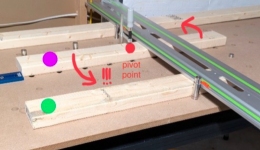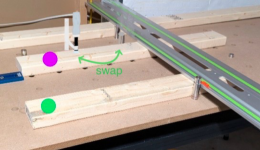woodferret
Member
Packard said:What does kick-back on the track saw look or feel like. What are the typical causes? I did not even know it was a possibility until this thread.
Low grade, underpowered track saws will bind and slightly lift if it's a kerf closer. The higher torque saws will climb completely out and produce the Makita smile (what I call it) which is an arc over the rail towards your crotch given how it's weighted to the left. That said, there's plenty of festool tracks out there that have the smile too even with our riving knife, and that's why we have the back stop we're suppose to place behind the saw during a plunge. Makita has an after-sale kickback stop that locks into their anti-tip rail.
Kerf closing is the most typical one, although the rail shifting because of sawdust, or just plain user-error of pushing the saw laterally can also cause it. Plunging during startup or too fast is also another user-error one.


